This is one in a series of posts on the Fujifilm GFX 100S. You should be able to find all the posts about that camera in the Category List on the right sidebar, below the Articles widget. There’s a drop-down menu there that you can use to get to all the posts in this series; just look for “GFX 100S”. Since it’s more about the lenses than the camera, I’m also tagging it with the other Fuji GFX tags.
In the previous ten posts, I tested the off axis performance of the Fujifilm 110 mm f/2, 80 mm f/1.7 , 250 mm f/4, 63 mm f/2.8, 45 mm f/2.8, 50mm f/3.5, 30mm f/3.5, 23mm f/4, and 120 mm f/4 macro GF lenses on a GFX 100S. In the last post I compared the performance of the 23, 30, 45, 50, and 63 mm primes. In this one, I do the 80, 110, 120, and 250.
Here’s the test protocol:
- RRS carbon fiber legs
- C1 head
- Target distance as per the table below
- ISO 100
- Electronic shutter
- 10-second self timer
- f/4 through f/11 in whole-stop steps
- Exposure time set by camera in A mode
- Focus bracketing, step size 1, 120 to 60 exposures
- Initial focus well short of target
- Convert RAF to DNG using Adobe DNG Converter
- Extract raw mosaics with dcraw (I’ll change this to libraw and drop the DNG conversion when I get the chance, but the Matlab program that controls all this is written for dcraw)
- Extract slanted edge for each raw plane in a Matlab program the Jack Hogan originally wrote, and that I’ve been modifying for years.
- Analyze the slanted edges and produce MTF curves using MTF Mapper (great program; thanks, Frans)
- Fit curves to the MTF Mapper MTF50 values in Matlab
- Correct for systematic GFX focus bracketing inconsistencies
- Analyze and graph in Matlab
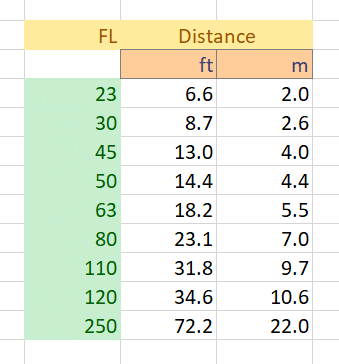
I analyzed a horizontal edge in the center of the frame, and both a horizontal and a vertical edge on the far right side of the frame. The horizontal edge is oriented in a radial direction, and that’s how I’m identifying it in the plots. The horizontal edge is oriented in a tangential direction, and that’s the way I’m tagging it. I also redid the tests with the target on the lens axis. I looked at both horizontal and vertical edges. The edges are identified on the graphs as, respectively, radial and tangential edges. Those terms don’t make sensor on axis. The numbers ought to be the same, but I’ve included both to give you an idea of the variation possible with my test method.
Here are the MTF50 results in cycles per picture height:
I measured the MTF50 on each of the raw channels, and am reporting on the MTF50 on a white-balanced composite of those channels, which is mostly the green channel. I tried a different ordering this time, with the center performance of each lens first, followed by the corner performance in both directions, but ordered by focal length.
Next is the microcontrast at the my personal standard of 0.25 cycles per pixel.
As usual, this looks a lot like he MTF50 plot.
With a tougher standard of 0.33 cycles per pixel:
Now for the longitudinal chromatic aberration (LoCA).
The above plots the shift of the red raw image plane (on the sensor side of the lens) compared to the white-balanced raw plane. Below we have the shift of the blue raw image plane compared to the same standard.
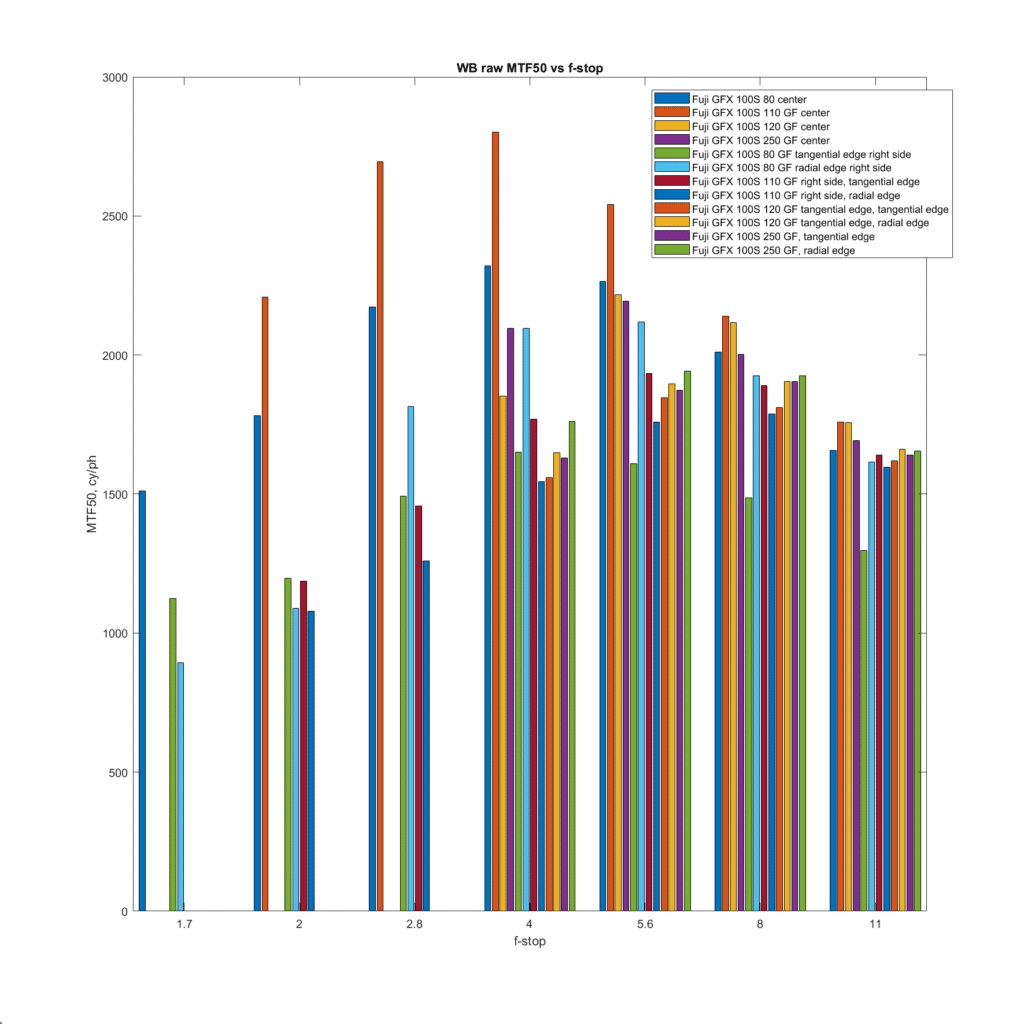
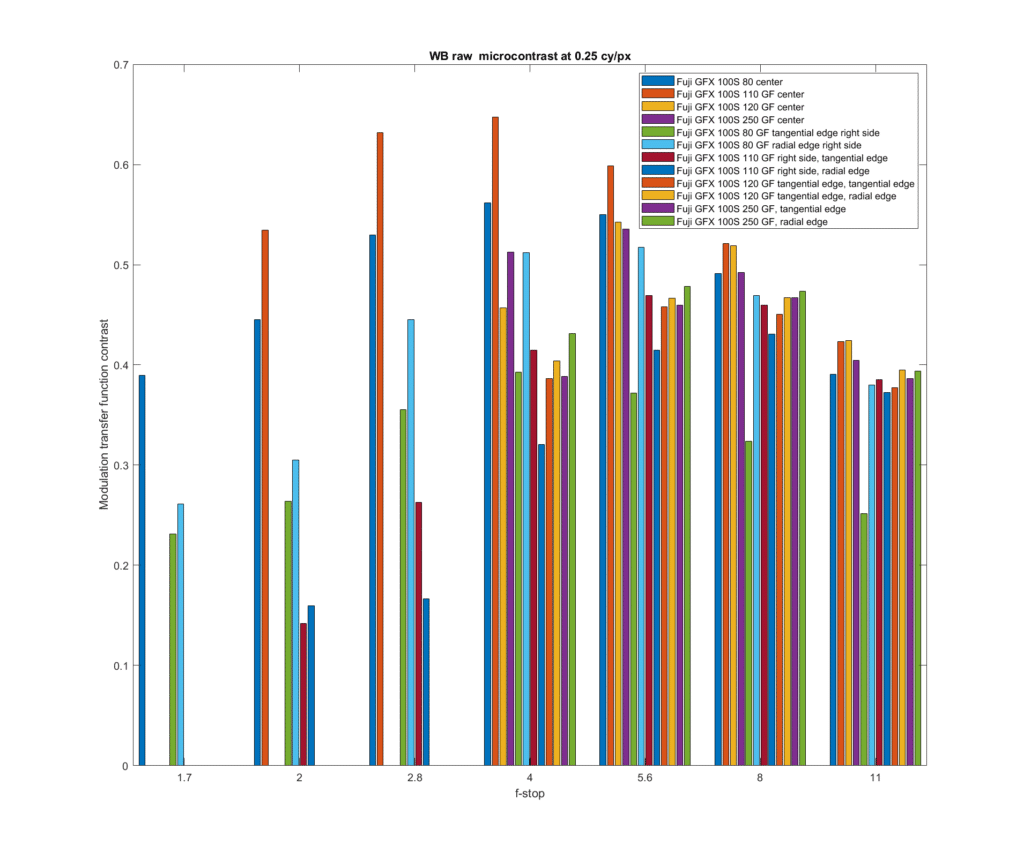
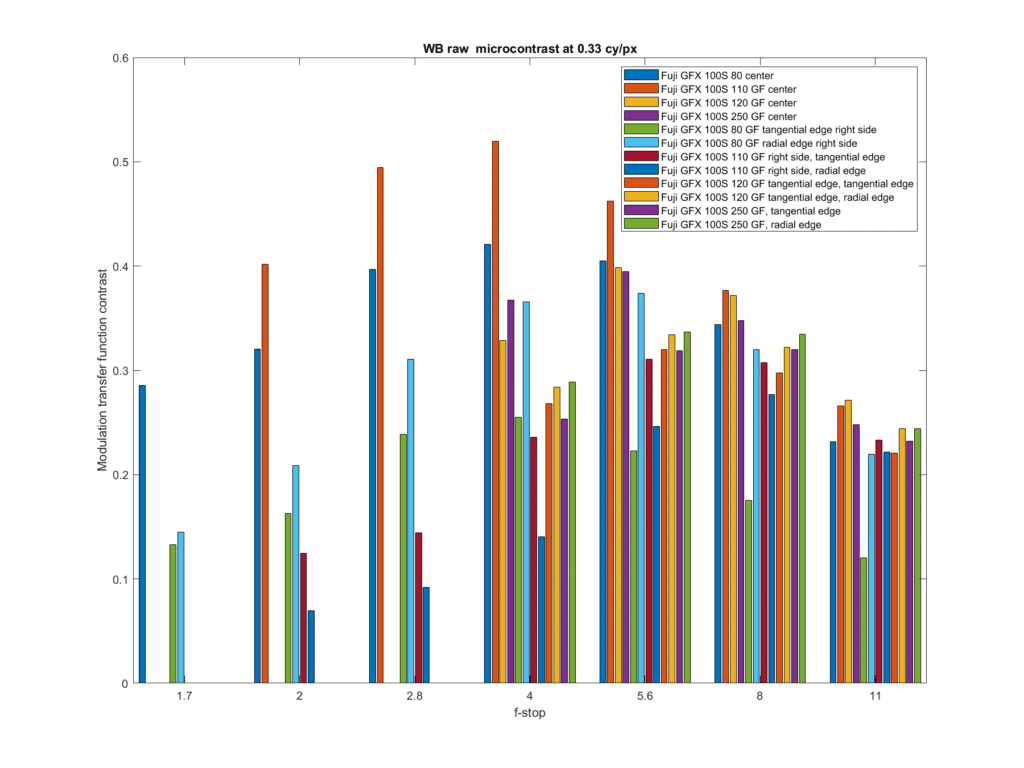
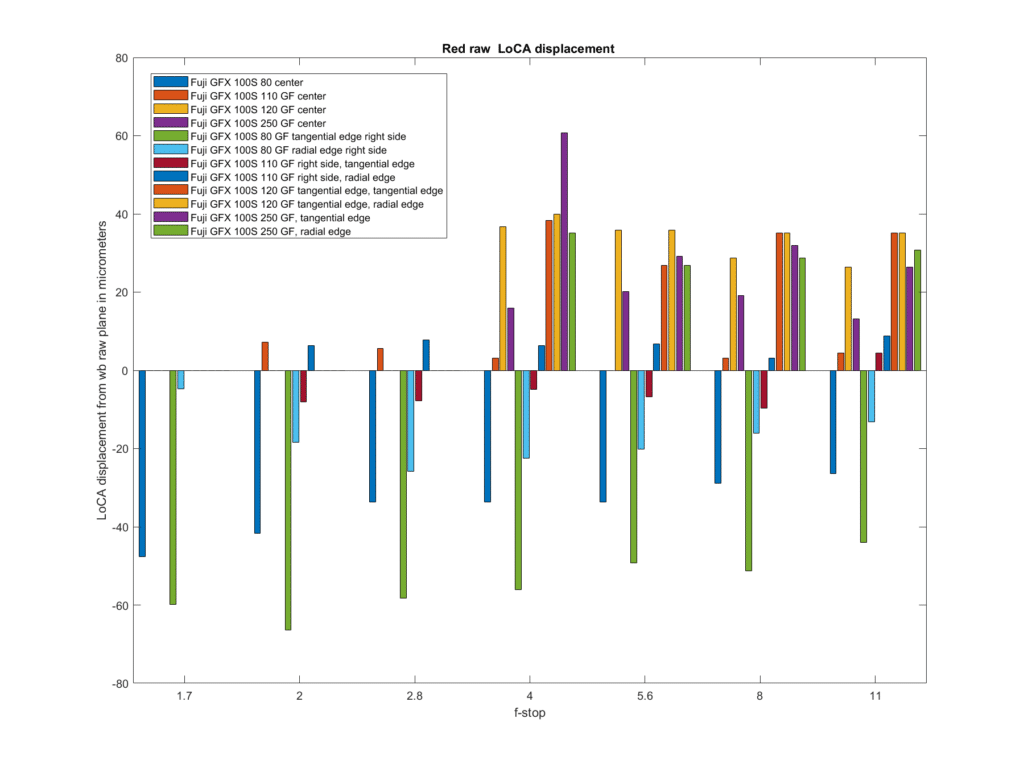
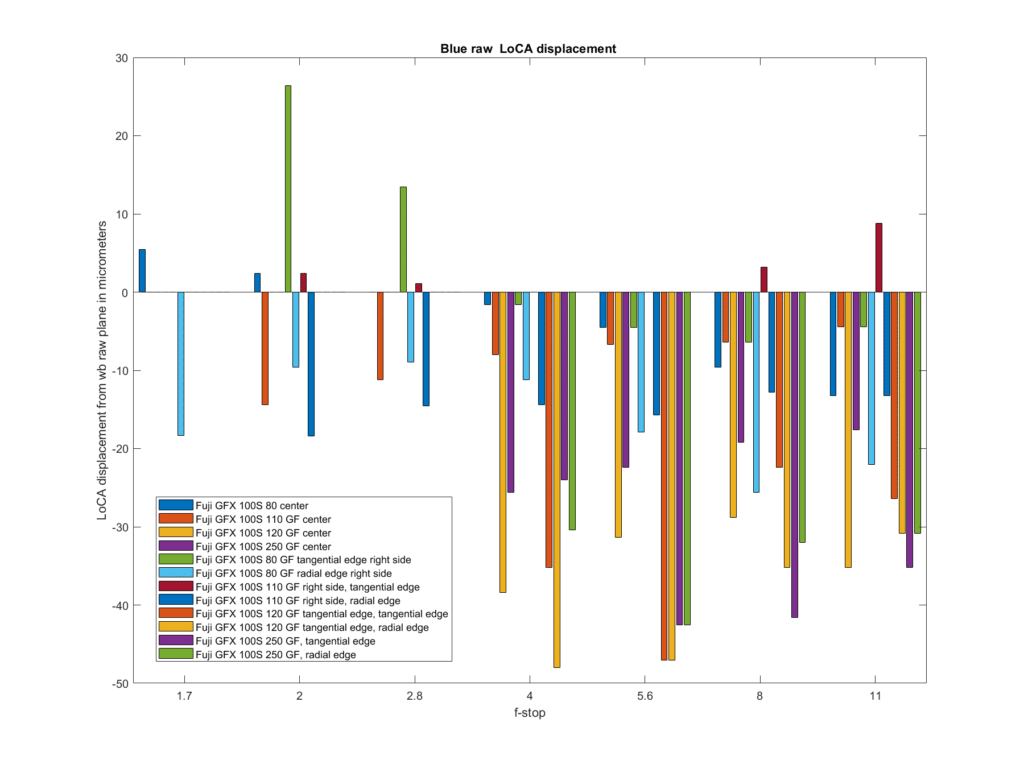
Leave a Reply